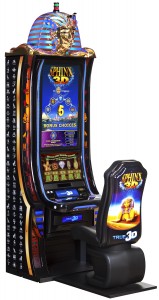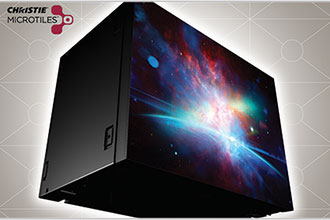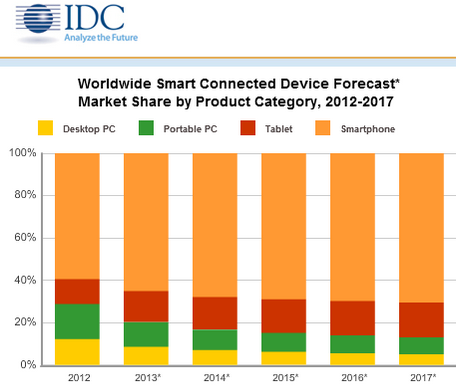Samsung lead the way in commercializing transparent LCD display products for a wide variety of retail display applications such as product showcases, commercial freezer doors and platform doors of subway stations. More recently,
HiSense International Co., Ltd (China) has taken the concept (one dimension) further by demonstrating a prototype glasses-based transparent 3D display.
The transparent, 1080p, 50-inch LCD makes it possible to have physical objects behind the display be completely visible while, simultaneously, having a picture or video floating in front of the display screen.
Bron; www.display-central.com

A video illustrating the transparent 3D display in operation can be found below. The video illustrates the transparent 3D display configured for use by a real estate company. In this application, a physical model of a town is placed behind the display screen, while the video on the display indicated properties for sale in the town.
A principle difference between the transparent 3D LCD TV and a conventional 3D LCD TV relates to the backlight. In a conventional 3D LCD TV (and also in a normal 2D LCD TV) the backlight and LCD panel are fixed together. In HiSense’s transparent 3D LCD, the backlight is distanced perhaps a foot from the LCD panel. The physical objects are positioned between the display panel and the backlight.
A very significant point is that the new HiSense transparent 3D display requires that users put on passive polarized glasses to see the 3D image. Clearly, this requirement puts constraints on possible applications for the display.
HiSense stated that the transparent 3D is not really intended for consumers. Rather, the prototype is intended to test the interest level of corporate buyers for applications on office walls or as an advertising display. Other potential applications include use in museums and other attractions where it could be used to create displays that combine real objects – such as artifacts – with 3D images.
Although called a prototype, the demonstration unit looks as if it could quickly be made into a product. In fact, HiSense commented that the company is anticipating availability in 2013 for a price of about $3,000.
It is interesting to note that the HiSense prototype is not the first effort at development of a transparent 3D display. A somewhat different approach was under development by researchers at the
University of Bristol (Bristol, United Kingdom). This project was called MUSTARD, a clever acronym for Multi User See Through Augmented Reality Display.
A copy of a recent article published by the Bristol group can be found
here. A video explaining the configuration and principles of operation of the MUSTARD display can be found below.
The researchers describe MUSTARD as a “dynamic random hole see-through display, capable of delivering viewer dependent information for objects behind a glass cabinet.” The system consists of two liquid crystal display panels between which physical objects can be placed. The rear LC panel serves as a dynamic mask while the front panel provides the data. The system can include head tracking.
In as much as the MUSTARD approach is autostereoscopic, the main constraint of the HiSense approach is mitigated. On the other hand, although MUSTARD is LCD based, it is a more complex and likely more expensive configuration.
The bottom line for transparent 3D displays is that both these candidate approaches have a drawback that would limit their potential for commercialization. This is a category of 3D display technology whose time may not yet have arrived.
 Foto: AFP
Foto: AFP 












































